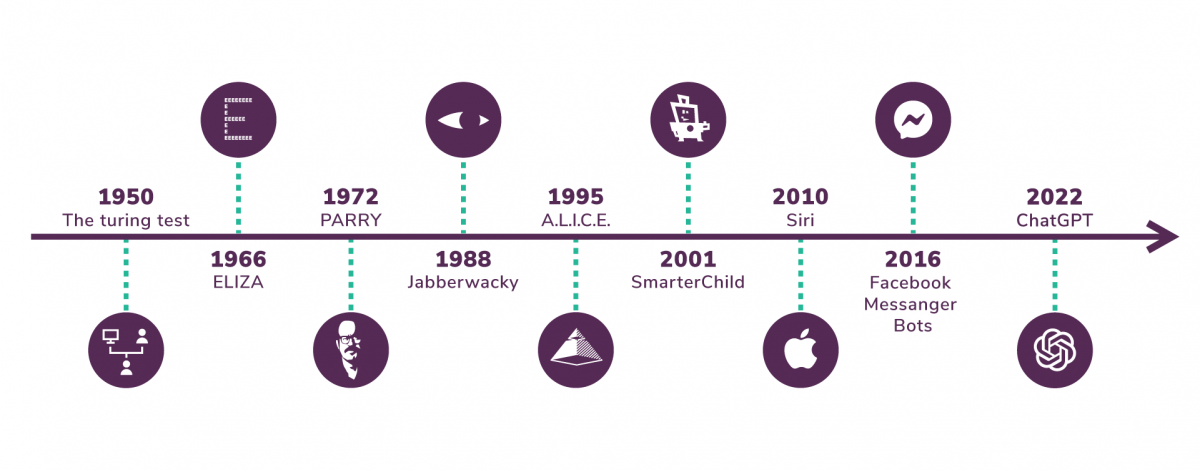From live operators to virtual agents, discover the benefits of live chat
The customers of today want answers quicker than ever before. While 62% of customer service emails remain unanswered and call center hold music has driven many of us to despair, live chat has proven itself the savior of customer service in the 21st Century.
Today’s buyers prefer not to pick up a phone to have their questions answered, and they’re tired of waiting hours (if not days) for their emails to be answered, too. In comparison, live chat offers rapid responses, improved customer satisfaction levels, and has even been shown to increase sales.
Live chat allows customers to resolve their issues without leaving the company website. Much like social media platforms, this integrated communication channel works via a chatbox, usually floating in the bottom-right corner of every page.
Traditionally, a live agent picks up the problem, communicating with the customer in real-time to offer solutions specific to their user profile. However, these days, an increasing number of enterprises are opting for an automated live chat solution - a chatbot - due to the improved capabilities, faster response times, and increased ROI.
What is live chat?
In simple terms, live chat gives companies direct access to customers and vice versa. Through a pop-up on the website, customers can ask questions about products, orders, or services and receive almost instantaneous answers.
From the company’s side, customer service, technical and sales staff can suggest new products to return customers, secure sales in the moment, and get insightful feedback on customer satisfaction.
The changing customer experience
While it’s been around since the 70s, in some industries, the use of live chat has increased by 150%, with it being the preferred method of communication for some 46% of customers, according to Econsultancy.
These statistics show a strong upwards trend that’s confirmed by a brief look at modern society. A growing proportion of society is avoiding the use of phones (at least for making calls) in general, while the average time to wait for an email response from customer service is a lengthy 12 hours.
The importance of rapid responses
Really, it all comes down to one simple thing. Speed.
Customers that receive fast responses are far more likely to stay loyal to the company. It means they never have to seek answers elsewhere (for example, competing websites), with the added bonus of making them feel like the company truly cares about their experience.
What are chatbots?
A chatbot is computer software that simulates a conversation with real human users. This live chat automation software cuts out the middle man, or live agent, to give prompt answers to customers with queries or issues.
While chatbots may seem like new technology, the first chatbot was actually devised in the 1960s. ELIZA, as the program was affectionately named, was created by scientists working in MIT’s artificial intelligence department.
ELIZA’s ability to elicit conversation from users surprised researchers. Using simple conversation cues to prompt scripted responses, the department found that users shared their problems, even personal ones.

These days, chatbots have access to a world of information and have witnessed incredible advances in technology. They can now provide human-like responses and significantly improved resolution rates in record time through a combination of human expertise and the efficiency of artificial intelligence.
This automated live chat software is easily integrated into online businesses and can become a vital part of your infrastructure. Whether it’s sending welcome messages, offering solutions to complicated problems, booking appointments, or offering FAQ sessions, these software programs can be taught the specifics of your business, understand your brand personality, and empower your online growth.
Virtual agents, as they are also named, have even broken the text barrier, and certain chatbots can process speech and reply in kind. The advantages of these non-human actors are huge, so let’s take a look. By combining real agents with automated live chat solutions, you can offer 24/7 support without losing that human touch.
The benefits of live chat automation
Chatbots are the artificial intelligence version of live chat, but instead of dehumanizing the customer experience, they can be paired with existing live agents to create a more comprehensive service.
24/7 service
More and more businesses operate worldwide, and customers are seeking immediate satisfaction. With no need for sleep or breaks, chatbots can provide an on-demand response so that customers feel heard, even when they message in the middle of the night. This is also a useful way to overcome time zones and work globally with ease, ensuring you can provide that same level of customer support no matter where your customer is and what time of day it is.
Rapid responses
With 90% of buyers seeking instantaneous responses, according to HubSpot, the use of a chatbot means customers stay on your page rather than looking elsewhere for their answers. Chatbots have access to incredible amounts of data, but even when the issue does require a live agent, the customer will feel more at ease waiting for a live agent when the chatbot has already taken the important information in advance.
Streamlined sales
Live chat automation software can capture incoming leads, ask them relevant questions, and prompt them through the sales funnel. Immediate responses in real-time reduce the friction of conversions, while live agents can step in at the right moment to secure the sale.
Increased engagement
By providing information based on the customer’s input and history with the brand, chatbots can drastically improve customer engagement. Speaking to a chatbot while you shop is a more interactive experience, while the personalized support customers receive can clinch the deal at decision time.
Cutting costs
The vast majority of customer service interactions are repeated issues with a straightforward answer. Over 87 percent of customers claim to have had their issue resolved by chatbots, which demonstrates a significant decrease in work for your live agents. This allows your human staff to focus where they are truly needed and for you to grow your business without taking the risk of huge expense outlays and hiring new customer service agents.
No bad days
Customers expect a consistent experience where they can reliably predict how a business will respond to them. It’s an important part of any brand personality and one that chatbots can help you establish. There’s no such thing as a bad night’s sleep or a sick day for a chatbot, which means there’s no chance of customers being offended because of poor service. They will always receive the same level of service no matter what, and there is no risk of tempers becoming frayed, which can lead to a negative experience.
Intuitive escalation
As intelligent as they are, chatbots know their limits and can escalate the issue to a live agent when necessary. For certain issues, such as offering industry discounts, a human decision is essential, and knowing that your live agents will receive all the relevant information at the start of the conversation is undeniably helpful.
Improved satisfaction
It’s no secret that customers return to companies that treat them well, understand their concerns, and offer speedy solutions for their issues. Chatbots go a long way towards guaranteeing a positive customer experience every time. Better yet, they can ask for customer feedback in real-time, which offers you concrete data while looking for areas of improvement. This data can be used to give you business insights, help with product development, and even provide material for future training courses.
Chatbot best practices
With more and more modern businesses opting to take the live chat automation route, we can learn from real-world experience to offer the best integration process. As with any new process, avoiding disruption is vital. When we’re talking about customer service, this importance is compounded. So, how should you proceed?
Focus on timing
If your chatbot will be the one starting the conversation, consider when the best time to do this would be. Will you send an automatic message after a certain amount of time spent on the site? Or perhaps your chatbot will be triggered when a customer has viewed a product twice or when they access the page from a specific location?
Consider the purpose of your automated live chat. If your chatbot is going to be fielding customer issues and complaints, it might be a good idea to have it pop up on the contact page. If the chatbot has been incorporated into your sales team, the right time to strike could be when the user is looking at pricing plans.
Prepare your script
Preparing some canned responses gives you an opportunity to think about the voice your bot will use and whether that will change for different users. Perhaps you want to give special treatment to long-term members, or perhaps first-time users are your target.
You’ll save time by writing out some common replies that tackle frequent issues and questions. Having the initial answers written in a friendly, human tone can also encourage your customers to head into the conversation with a positive attitude.
Educate your bot
When onboarding human staff, it's common to have a training program in place to help the new recruits understand the company and its primary goals. This may consist of the company’s history, an analysis of the target customer, or a mock sales call with a senior agent.
For your chatbot, think less team-building and coffee mornings and more ‘information sponge’. Feed the chatbot user histories, customer service logs, sales data, and product information, and they can analyze that data to know how best to help the customer.
Enlighten your customers
Most times, a customer simply needs to be pointed in the right direction. By creating a comprehensive knowledge base and giving your chatbot access, your bot can act as a compass, pointing your customers toward the information they need.
From blogs to how-to guides and product directories to FAQs, you can set up your chatbot to link customers to the relevant page when it recognizes certain trigger words or phrases.
Why you should consider live chat automation
Integrating a chatbot into your company's online presence can improve customer engagement, save costs, and increase sales.
They can easily be combined with live agents to offer a holistic customer service experience or form a part of your sales funnel to hook leads and increase your conversion rate.
There are many chatbot software products out there, so it’s important to choose one that suits your specific needs. Decide where you want your chatbot to act, and then choose the software that fits your budget and company culture.
Chatbots by boost.ai
At boost.ai, our chat and voicebots are powered by conversational AI, which enhances their ability to understand and interpret human language. This helps businesses to automate and scale both customer service and internal support without significantly increasing manpower or resources.
Our live chat automation software is easily integrated into any existing channel, including websites, mobile apps, phone IVR systems, and familiar platforms like Slack, Facebook Messenger, Salesforce, and Microsoft Teams.
